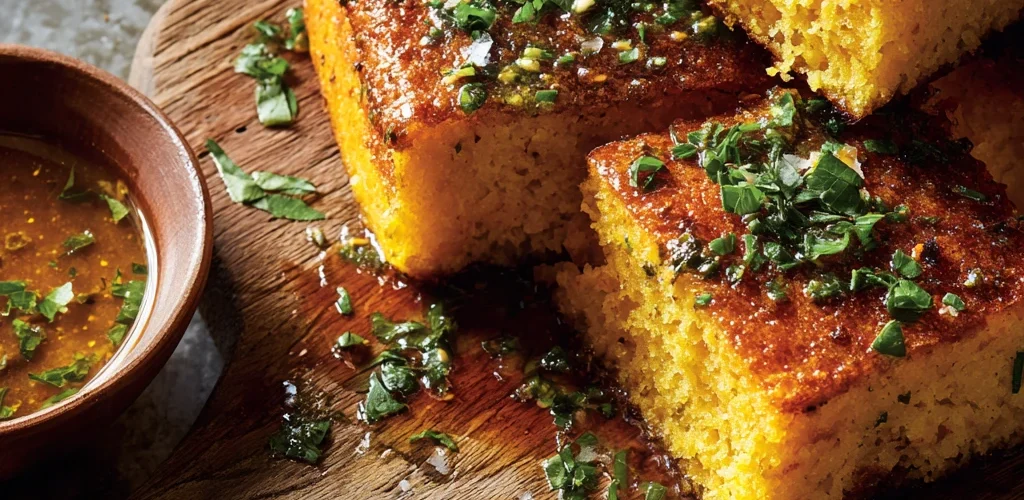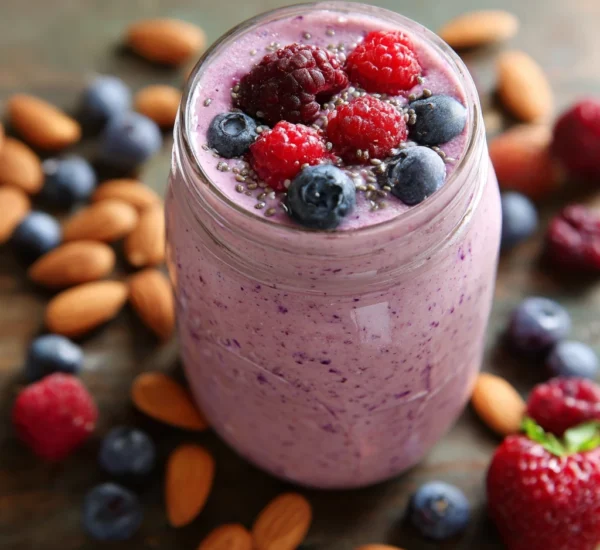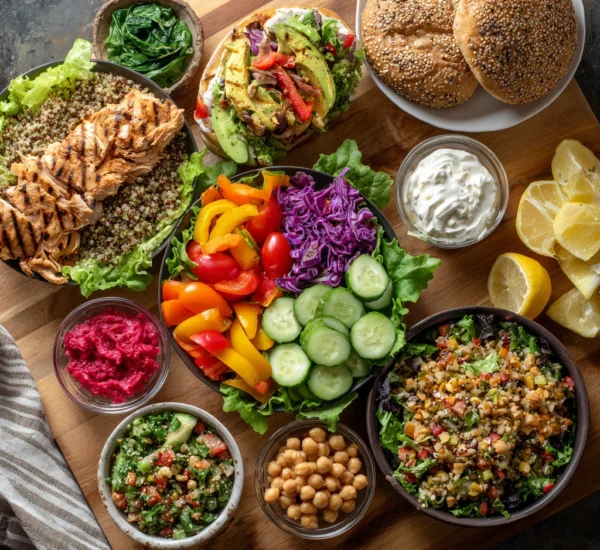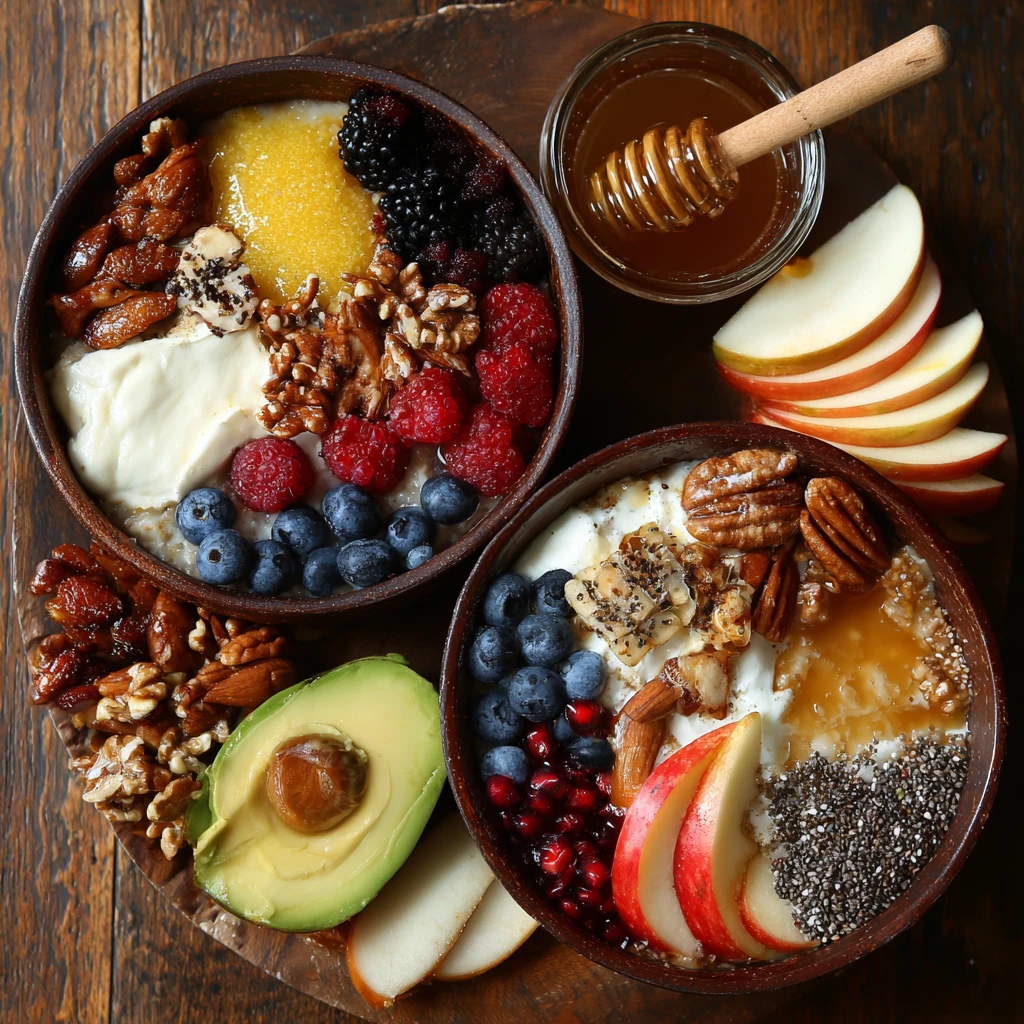Easy Meal Swaps for More Flavor: Elevate Your Everyday Cooking
Tired of bland meals? You don’t need to be a gourmet chef to create flavorful dishes. Simple meal swaps can transform your cooking, adding depth and excitement to your plate without requiring hours in the kitchen or complex recipes. This guide will walk you through easy, impactful ingredient substitutions and cooking techniques that will elevate your everyday meals.
1. Spice Up Your Pantry: The Flavor Powerhouses
Spices are the unsung heroes of flavorful cooking. A well-stocked spice rack is your first line of defense against boring meals. The key is understanding how different spices interact with each other and how to best utilize them in various cuisines.
Herbs and Spices 101: Understanding the Basics
Fresh herbs offer a vibrant, bright flavor, while dried herbs are more concentrated. Fresh herbs are best added at the end of cooking, while dried herbs can be added earlier to infuse the dish with flavor. Common flavor families include:
- Mediterranean: Oregano, basil, thyme, rosemary.
- Indian: Cumin, coriander, turmeric, cardamom, garam masala.
- Mexican: Chili powder, cumin, oregano, smoked paprika.
- Asian: Ginger, garlic, chili flakes, star anise, five-spice powder.
Experiment with different combinations to discover your personal favorites. Don’t be afraid to try something new!
Swap Salt for Flavor-Packed Alternatives
While salt enhances existing flavors, relying solely on it can result in a one-dimensional taste. Consider these swaps:
- Umami Boost: Soy sauce, miso paste, nutritional yeast. These ingredients add a savory depth and richness.
- Acidic Brightness: Lemon juice, lime juice, vinegar. A splash of acidity balances flavors and adds a refreshing zing.
- Spicy Kick: Chili flakes, sriracha, harissa paste. Add heat gradually to control the intensity.
- Herbaceous Notes: Fresh or dried herbs. A sprinkle of fresh parsley, cilantro, or chives can brighten up any dish.
Upgrade Your Oil: Infused Oils and High-Quality Fats
Don’t underestimate the power of a good cooking oil. Infused oils can add a subtle yet distinct flavor to your dishes.
- Garlic-Infused Oil: Perfect for sautéing vegetables, drizzling over pasta, or dipping bread.
- Chili-Infused Oil: Adds a spicy kick to stir-fries, noodles, and pizzas.
- Herb-Infused Oil: Basil, rosemary, or thyme-infused oil is delicious on salads, grilled meats, and roasted vegetables.
Consider using higher-quality fats like olive oil, avocado oil, or coconut oil for their unique flavor profiles and health benefits.
2. Veggie Variety: Boosting Flavor and Nutrition
Vegetables are a nutritional powerhouse, but they can also be a flavorful addition to any meal. Swapping out bland veggies for more flavorful options or using creative cooking methods can make a big difference.
From Basic to Bold: Vegetable Swaps
- Iceberg Lettuce to Arugula: Arugula offers a peppery bite that adds complexity to salads and sandwiches.
- Button Mushrooms to Shiitake Mushrooms: Shiitake mushrooms have a richer, more umami flavor.
- Canned Tomatoes to Roasted Tomatoes: Roasting tomatoes intensifies their sweetness and creates a deeper flavor.
- Plain Potatoes to Sweet Potatoes: Sweet potatoes offer a naturally sweet and slightly nutty flavor.
Roasting for Richness: Unlock the Flavor Potential
Roasting vegetables brings out their natural sweetness and creates a caramelized flavor. Toss vegetables with olive oil, salt, pepper, and your favorite herbs and spices before roasting at a high temperature (around 400°F or 200°C) until tender and slightly browned. Root vegetables like carrots, parsnips, and beets are particularly delicious when roasted.
Pickled Perfection: Adding Zesty Flavors
Pickled vegetables add a tangy, crunchy element to any meal. Pickled onions, cucumbers, radishes, and carrots are easy to make at home and can be used in salads, sandwiches, tacos, and more. The acidity of the pickling brine cuts through richness and adds a refreshing contrast.
3. Protein Power-Ups: Beyond the Basics
Protein is an essential part of a balanced diet, but it doesn’t have to be boring. Simple swaps and marinades can transform your protein sources into flavorful masterpieces.
Marinate for Maximum Flavor: The Secret Weapon
Marinating protein infuses it with flavor and tenderizes it. A basic marinade typically includes an acid (like vinegar or citrus juice), oil, and seasonings. Experiment with different marinades to create unique flavor profiles.
- Asian-Inspired Marinade: Soy sauce, ginger, garlic, sesame oil, honey.
- Mediterranean Marinade: Olive oil, lemon juice, oregano, garlic, salt, pepper.
- Spicy Marinade: Chili powder, cumin, paprika, garlic, lime juice, olive oil.
Marinate protein for at least 30 minutes, but longer marinating times (up to 24 hours) will result in more intense flavor.
Swap Your Cuts: Choosing Flavorful Protein Options
- Chicken Breast to Chicken Thighs: Chicken thighs are more flavorful and stay moister than chicken breasts.
- Ground Beef to Ground Lamb: Ground lamb has a richer, gamier flavor that is delicious in burgers, meatballs, and sauces.
- White Fish to Salmon: Salmon is packed with flavor and healthy fats.
- Tofu to Tempeh: Tempeh has a nuttier, more complex flavor and a firmer texture than tofu.
Embrace Seafood: A Flavorful and Healthy Choice
Seafood is a great source of protein and offers a wide range of flavors. Don’t be afraid to experiment with different types of seafood.
- Shrimp: Versatile and quick-cooking, shrimp can be grilled, sautéed, or added to stir-fries.
- Salmon: Rich in flavor and omega-3 fatty acids, salmon can be baked, grilled, or pan-fried.
- Cod: A mild-flavored white fish that pairs well with a variety of sauces and seasonings.
- Mussels: A flavorful and affordable shellfish that is delicious steamed with garlic, white wine, and herbs.
4. Sauce Sensations: The Flavor Amplifier
Sauces are the finishing touch that can elevate any dish from good to great. Making your own sauces allows you to control the ingredients and customize the flavor to your liking.
From Scratch is Best: Homemade Sauce Magic
- Pesto: A vibrant green sauce made with basil, pine nuts, garlic, Parmesan cheese, and olive oil.
- Marinara Sauce: A classic tomato-based sauce that can be used on pasta, pizza, and more.
- Chimichurri Sauce: An Argentinian sauce made with parsley, garlic, oregano, red wine vinegar, and olive oil.
- Peanut Sauce: A flavorful sauce made with peanut butter, soy sauce, rice vinegar, honey, and chili garlic sauce.
Homemade sauces are often healthier and more flavorful than store-bought options. Plus, they’re surprisingly easy to make!
Smart Swaps: Elevating Store-Bought Sauces
Even if you don’t have time to make sauces from scratch, you can still elevate store-bought sauces with a few simple additions.
- Add Fresh Herbs: Chopped parsley, basil, or cilantro can brighten up any sauce.
- Add Acid: A squeeze of lemon or lime juice can add a refreshing zing.
- Add Spice: A pinch of chili flakes or a dash of hot sauce can add a kick of heat.
- Add Umami: A splash of soy sauce or a sprinkle of nutritional yeast can add a savory depth.
Yogurt and Cream: Adding Richness and Tang
Yogurt and cream can be used to create creamy, flavorful sauces. Greek yogurt is a great alternative to sour cream and adds a tangy flavor. A splash of cream can add richness and depth to sauces.
5. Cooking Techniques: Flavor Beyond Ingredients
How you cook your food can have a significant impact on its flavor. Mastering a few key cooking techniques can take your meals to the next level.
Searing for Success: The Maillard Reaction
Searing creates a flavorful crust on meat and vegetables. The Maillard reaction, a chemical reaction between amino acids and reducing sugars, is responsible for the browning and development of complex flavors. To sear properly, use a hot pan and don’t overcrowd it.
Deglazing the Pan: Capturing Deliciousness
Deglazing involves adding liquid to a hot pan after searing meat or vegetables. The liquid loosens the browned bits stuck to the bottom of the pan, creating a flavorful sauce. Wine, broth, or vinegar are commonly used for deglazing.
Infusing Flavors: Slow Cooking for Depth
Slow cooking allows flavors to meld and deepen over time. Tough cuts of meat become tender and flavorful when slow-cooked. Use a slow cooker, Dutch oven, or oven set to a low temperature.
Grilling for Smokiness: Outdoor Flavor
Grilling adds a smoky flavor to food. Use charcoal, gas, or wood chips to create different levels of smokiness. Grilling is perfect for meats, vegetables, and even fruits.
Layering Flavors: Building Complexity
Layering flavors involves adding ingredients at different stages of the cooking process. Start with aromatics like onions, garlic, and ginger, then add spices, herbs, and finally, sauces. This technique allows each ingredient to contribute its unique flavor to the dish.
FAQ: Your Flavor Questions Answered
Q: How can I make my vegetables taste better?
A: Roasting, grilling, or sautéing with flavorful oils and spices can significantly enhance the taste of vegetables. Also, experiment with different herbs and sauces.
Q: What are some easy ways to add flavor to chicken?
A: Marinating chicken before cooking is a simple way to infuse it with flavor. You can also use spice rubs, sauces, or stuff the chicken with herbs and vegetables.
Q: How do I balance flavors in a dish?
A: Consider the five basic tastes: sweet, sour, salty, bitter, and umami. Aim for a balance of these flavors by adding ingredients that complement each other. For example, a squeeze of lemon juice can balance a rich, fatty dish.
Q: What are some common mistakes people make when trying to add flavor to their food?
A: Over-salting, not using enough spices, and not tasting as you go are common mistakes. Also, avoid using old or stale spices.
Q: How can I make healthy food more flavorful?
A: Focus on using fresh herbs, spices, and flavorful vegetables. Healthy fats like olive oil and avocado oil can also add richness and flavor. Don’t be afraid to experiment with different cooking methods like roasting and grilling.



